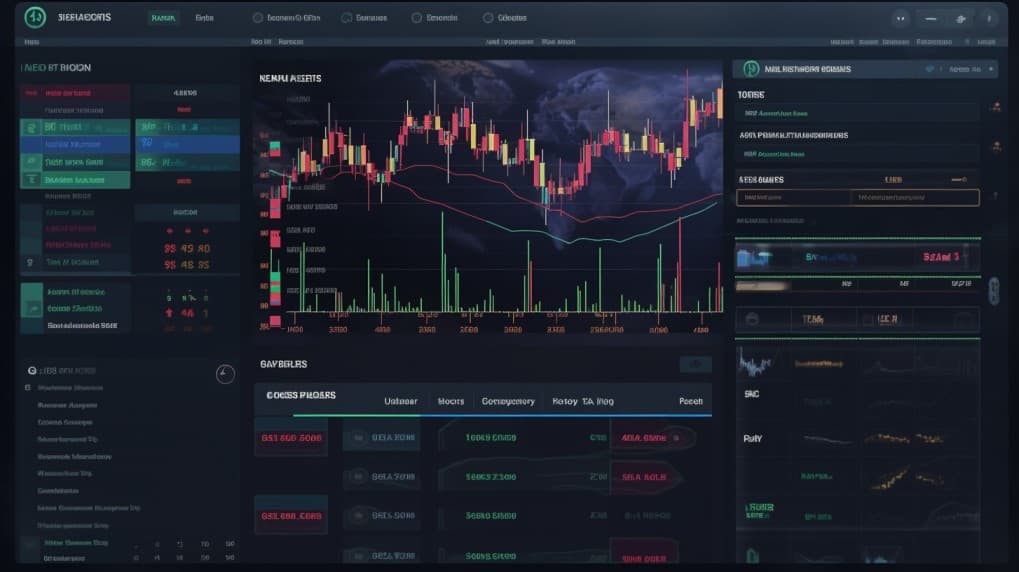
HYG VS USHY: A Comprehensive Comparison of ETFs
Comparing HYG Vs USHY: Overview
When it comes to high-yield corporate bonds, two prominent Exchange-Traded Funds (ETFs) often come into the conversation: iShares iBoxx $ High Yield Corporate Bond ETF (HYG) and iShares Broad USD High Yield Corporate Bond ETF (USHY). Both funds are managed by BlackRock, a global investment management corporation founded in 1988. The firm is one of the world's leading asset managers with more than $9 trillion in assets under management as of 2021. These ETFs provide investors with exposure to the high-yield bond market, but they differ in terms of the sectors they focus on and their capitalization strategy. Let's dive deeper to understand the unique aspects and differences between HYG and USHY.
Comparing HYG Vs USHY: Sectors and Top Holdings
The iShares iBoxx $ High Yield Corporate Bond ETF (HYG) focuses predominantly on bonds issued by companies in the consumer services, financial, and energy sectors. On the other hand, iShares Broad USD High Yield Corporate Bond ETF (USHY) offers a broader range of sector exposure, including bonds from the technology, healthcare, and industrial sectors.
HYG holds over 1,000 bonds, while USHY has a larger portfolio with over 1,800 holdings. In both cases, the top holdings are often bonds from well-known corporations like Ford, Sprint, and Dish Networks, but the weightage of each sector varies between the two funds, thus impacting their risk and return profiles.
 HYG overlap HYG VS USHY: A Comprehensive Comparison of ETFs
HYG overlap HYG VS USHY: A Comprehensive Comparison of ETFs
Comparing HYG Vs USHY: Capitalization Strategy
When it comes to capitalization, HYG predominantly targets bonds that are part of the Markit iBoxx USD Liquid High Yield Index. The focus here is on liquidity and market capitalization, ensuring that the fund's portfolio can be easily traded in the market. USHY, on the other hand, aims to track the ICE BofA US High Yield Constrained Index, which includes a broader range of high-yield bonds irrespective of their liquidity. This leads to a wider range of bond maturities and credit qualities in USHY compared to HYG.
Comparing HYG Vs USHY: Tracking and Exposure
Both HYG and USHY are designed to offer investors exposure to the high-yield corporate bond market. HYG is more liquid and often used by institutional investors for short-term trades. It has a shorter average bond maturity and focuses on the most liquid segments of the high-yield bond market. USHY is generally considered a better fit for investors looking for broader exposure to the high-yield bond universe. With a longer average bond maturity and a more diversified set of holdings, USHY can be a suitable option for those looking for long-term investments.
Conclusion:
Choosing between HYG and USHY comes down to your investment goals, risk tolerance, and the sectors you are interested in. While HYG offers liquidity and is focused on more established, higher market capitalization sectors, USHY provides a broader range of bond maturities and sector exposures. Both funds are managed by BlackRock, a global leader in investment management, making them reliable options for investors looking to diversify their portfolio by adding high-yield corporate bonds.
HYG ETF issuer
HYG ETF official page
HYG quote and analysis
Discover the top holdings, correlations, and overlaps of ETFs using our visualization tool.
Our app allows you to build and track your portfolio.
To learn more about the HYG iShares iBoxx $ High Yield Corporate Bond ETF, access our dedicated page now.